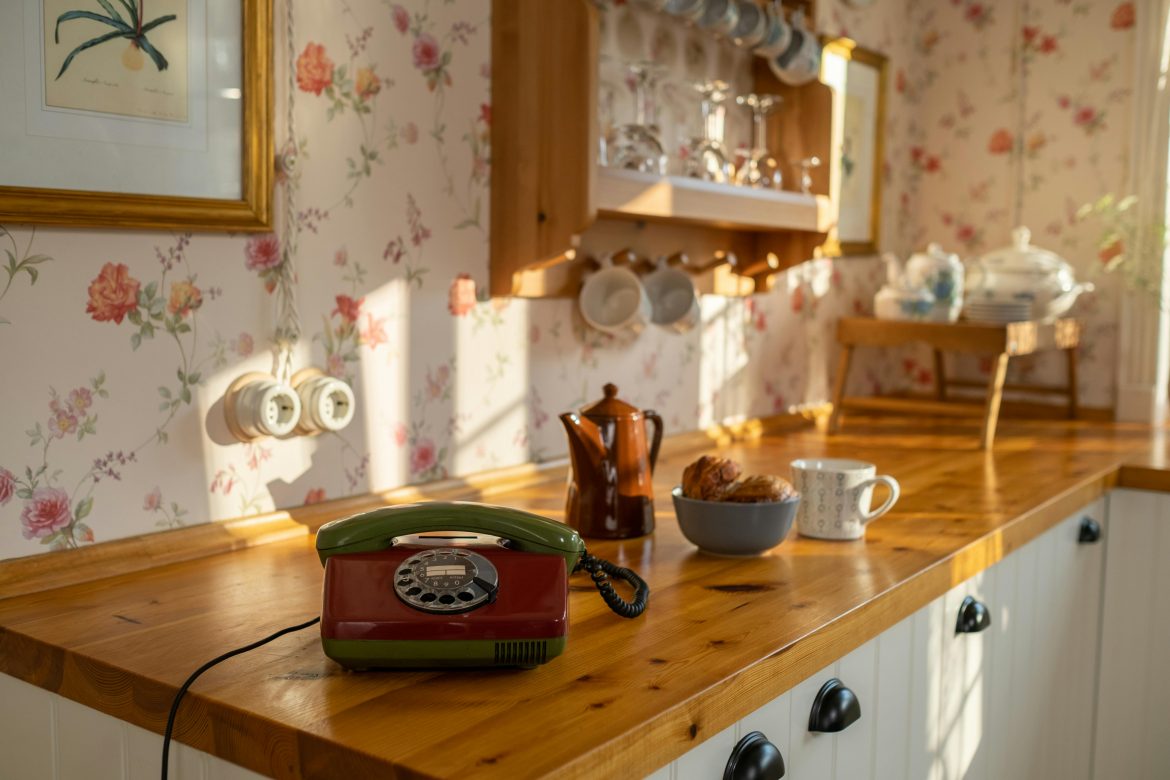From butter-yellow cabinets to butcher’s block counters, kitchens of the 1990s had a certain warmth and personality that’s creeping back into our interiors today. While not every element from the decade deserves a revival (we’re looking at you, orange pine), there are plenty worth reimagining for a modern home.
Here’s how to take nine classic 90s kitchen features and make them feel fresh, stylish and completely at home in 2025.
ALSO SEE: Smart storage ideas that don’t sacrifice style
Freestanding kitchen designs
While built-in kitchens dominate today, the 1990s celebrated freestanding pieces that felt lived-in and full of character. In 2025, this look works best when mixed with fitted cabinetry — think a freestanding island with storage, a vintage dresser repurposed as a pantry, or a standalone drinks cabinet. This mix creates a layered, collected feel rather than a showroom-perfect space.
Classic white kitchens
White kitchens became a staple in the 90s and have remained timeless. The key to keeping them current is in the details: pair crisp white cabinetry with natural stone counters, warm metallic hardware, and wooden accents to avoid a stark look. White remains one of the most versatile backdrops for any style, from contemporary minimalism to cottage charm.
Wooden kitchens
In the 90s, wooden kitchens often meant orange-toned pine — a look that dated quickly. Today’s revival focuses on natural, authentic finishes like oak, ash or walnut in soft, muted stains. Use wood for all cabinetry, or introduce it through an island or wall panelling for warmth and texture without overwhelming the space.
In-frame cabinetry
In-frame cabinet doors, set within a sturdy frame, give a handcrafted look that feels both classic and high quality. In a modern kitchen, pair this style with understated handles, bold paint colours, or stone worktops with delicate veining. The result is a traditional framework that works beautifully in a contemporary setting.
Island seating
Kitchen islands with seating were as much a social hub in the 90s as they are today. The update? Larger islands with generous overhangs for stools, comfortable seat cushions, and considered lighting overhead. This transforms the island from a quick breakfast perch to a true gathering spot for family and friends.
Glass-fronted cabinetry
Glass-front cabinets break up solid runs of storage and allow you to display beautiful crockery or glassware. To keep the look fresh, consider reeded or frosted glass, or limit glass fronts to a single feature section, like flanking a range hood or framing a bar area.
Chrome accents
The 1990s embraced chrome with enthusiasm — sometimes too much. In 2025, chrome is back in a more refined way. Instead of covering every handle and tap in high-shine metal, use chrome sparingly as a crisp accent against wood, stone, or soft neutral cabinetry. This cooler-toned metal adds sharpness without feeling cold.
Butcher’s block countertops
Once a hallmark of the 90s, butcher’s block counters bring natural warmth and a tactile surface to the kitchen. Modern use calls for restraint: a section of an island, a dedicated prep area, or even a removable board built into the counter. Pairing wood with stone surfaces keeps the look balanced and durable.
Butter yellow colour schemes
Butter yellow cabinetry is enjoying a comeback, but in softer, more sophisticated tones than its 90s counterpart. Pair it with warm whites for a calm, sunlit feel, or with rich blues and deep browns for contrast. This cheerful shade works especially well in kitchens with good natural light.
The takeaway: You don’t have to recreate a 1990s kitchen to capture its charm. By reintroducing just one or two of these elements — updated for 2025 — you can bring warmth, personality, and a touch of nostalgia to your space without sacrificing modern style.
ALSO SEE:
Featured Image: Pexels

